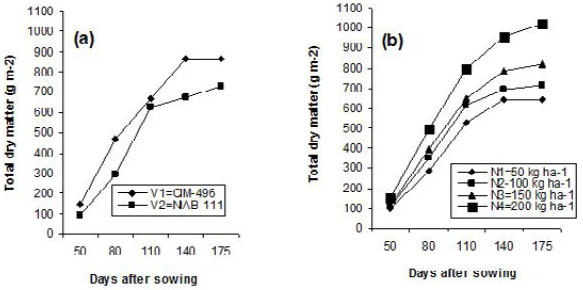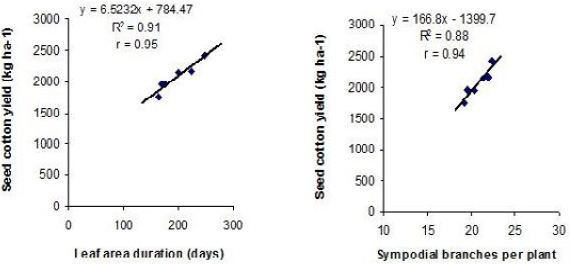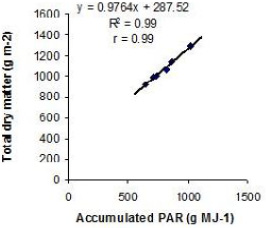Nitrogen Requirements of Promising Cotton Cultivars in Arid Climate of Multan
Nitrogen Requirements of Promising Cotton Cultivars in Arid Climate of Multan
Aftab Wajid1, Ashfaq Ahmad1, Muhammad Awais2, Muhammad Habib-ur-Rahman3*, M. Aown Sammar Raza2, Usman Bashir2, Muhammad Naveed Arshad1, Sana Ullah4, Muhammad Irfan5 and Umair Gull1
Effect of vartiety (a) and nitrogen (b) raets pm LAI.
Effect of variety (a) and nitrogen (b) rates on TDM assimilation.
Relationship between LAD and TDM and seed cotton yield.
Relationship of leaf area duration (LAD) and sympodial branches per plant with seed cotton yield (kg ha-1).
Relationship between accumulated PAR and total dry matter (TDM).
Relationship of number of bolls per plant and average boll weight (g) with seed cotton yield (kg ha-1).
Empirical model for seed cotton yield forecasting on the basis of nitrogen application in arid climatic conditions of Punjab.















